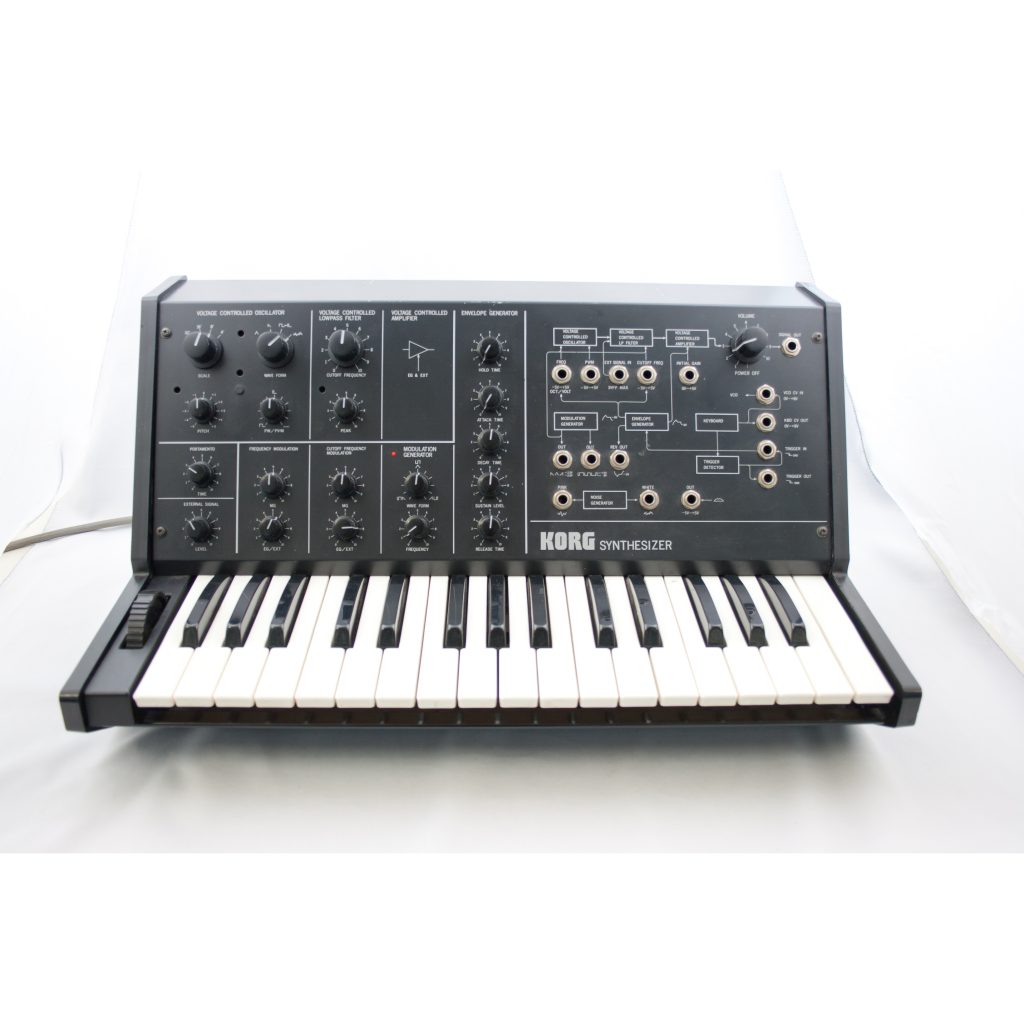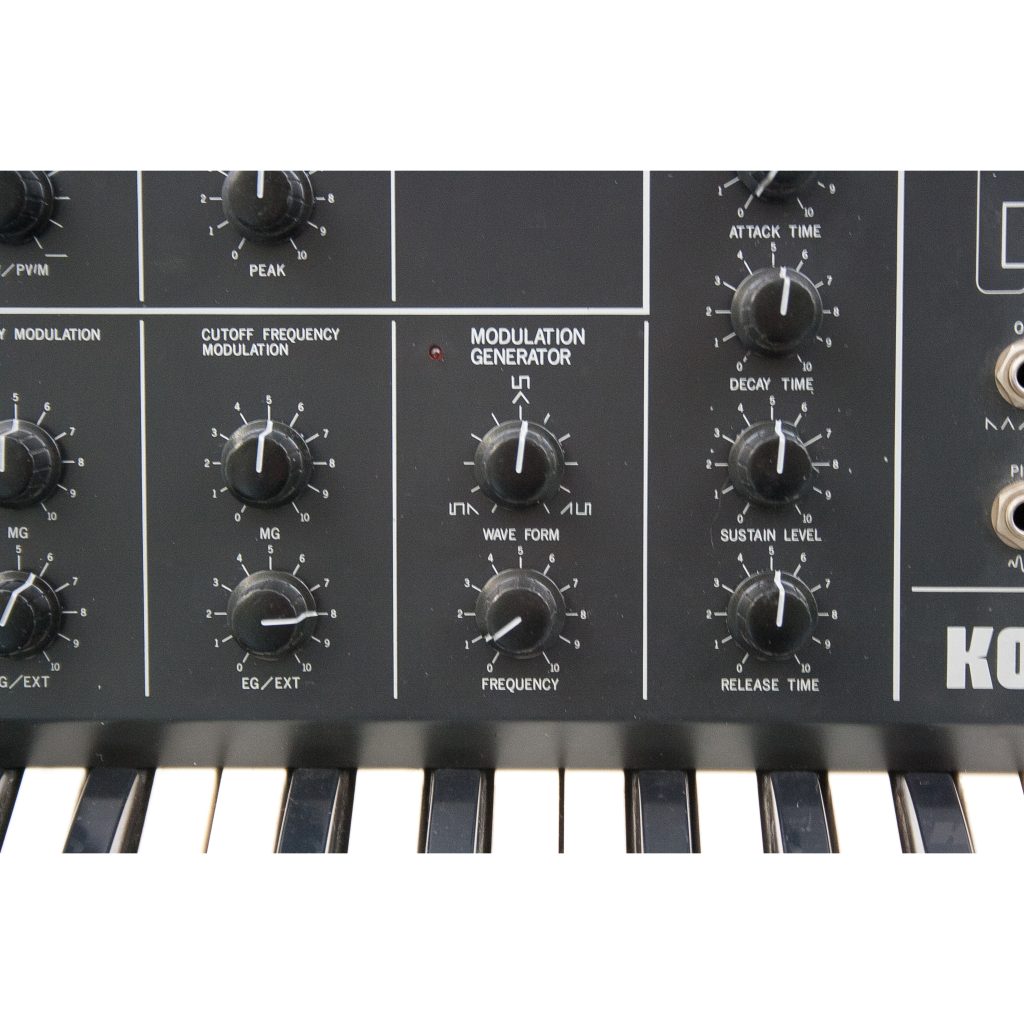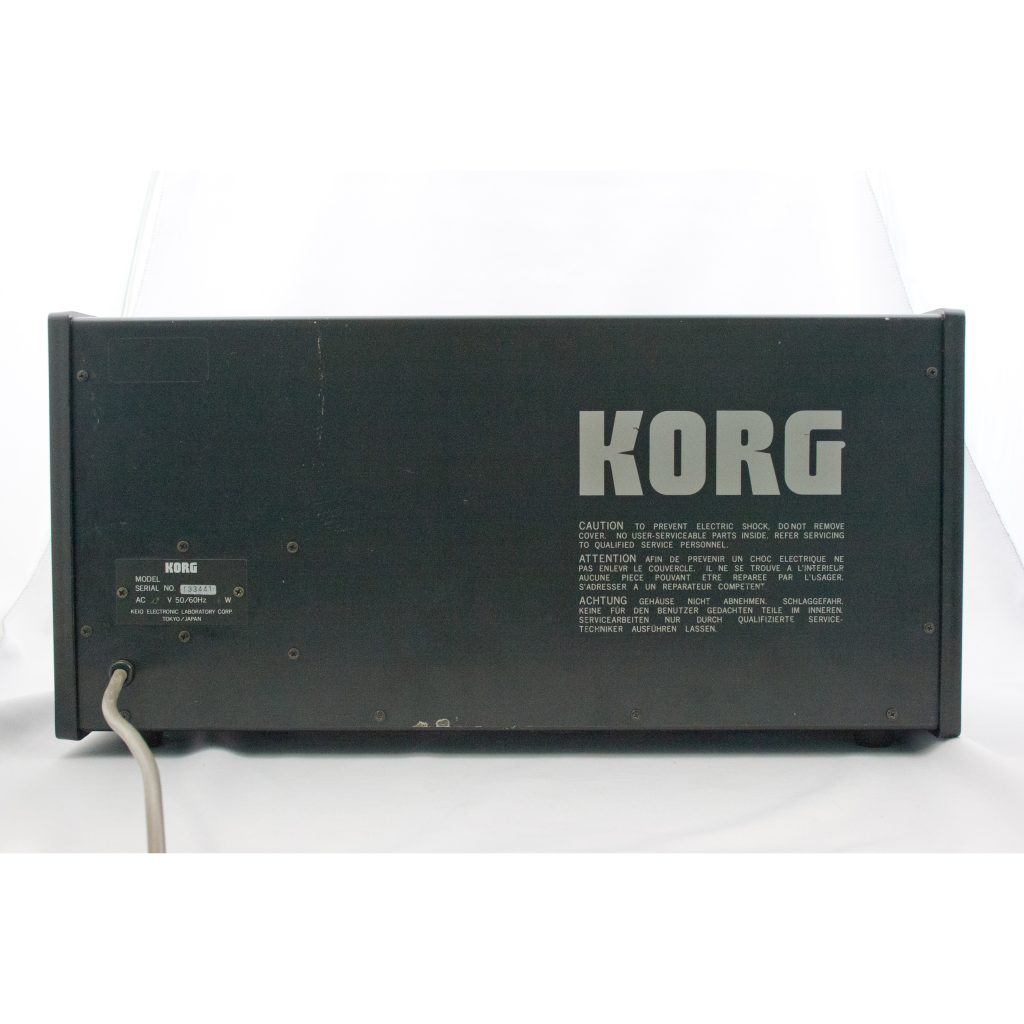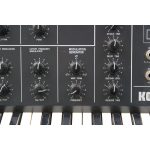Artefacts
Korg MS-10 analog synthesizer
MS-10
Korg MS-10 analog synthesizer
MS-10
(Accession Number: 218)
The Korg MS-10 analog synthesizer is a musical instrument capable of generating and modifying electronic signals, enabling a broad range of possible sounds. Produced by the Korg corporation in 1978, the MS-10 was a reduced model compared with other products, which often had more parts and thus offered greater flexibility. It follows the common conception of an analog synthesizer, with its distinction between sound sources (oscillators and noise generators), sources of control voltage (keyboard, low frequency oscillators, envelope generators), and modifiers (filter, amplifier). The layout of the MS-10 groups the controls for the various parts into independent blocks, but without the full flexibility that is offered by modular synthesizers, where these groups are placed in separate casings. At the same time, the patch panel of the MS-10 enables some connections that go beyond the synthesizer’s predefined structure for sound synthesis. In the mid-1980s, the paradigm of the analog synthesizer was largely displaced by digital synthesis, notably by synthesizers based on frequency modulation, such as the Yamaha DX7. However, since the 1990s it has seen a revival in interest. Like film photography or vinyl records, in the digital era the analog synthesizer has often been associated with a fuller, more authentic aesthetic experience by a niche group of enthusiasts. Historically, analog synthesizers are also remarkable for their intrinsic similarity with the analog computer, an early computing paradigm that has likewise been largely replaced by its digital counterpart.
Nikita Braguinski
© 2015 – 2026 Humboldt-Universität zu Berlin












